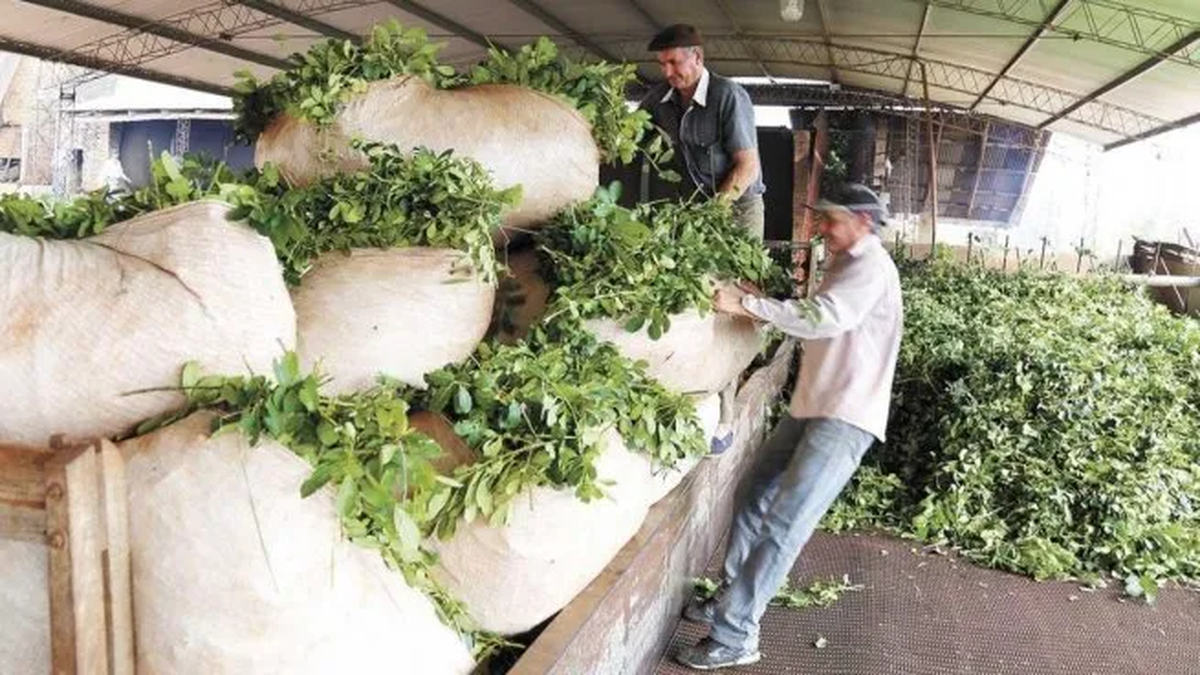While everyone in the Government is focused on the rains for soybeans and corn – crops that generate dollars and exports – a huge sector of the countryside throughout the country is going through one of its most delicate moments.. Regional economies cannot lift their heads and many are suffering a crisis that affects both small and medium-sized producers.
The latest CONINAGRO report, prepared by the entity’s economic area, confirmed that “of the 19 productive activities surveyed, ten show warning signs, while only three show growth.” This scenario is a direct consequence of factors such as high inflation, producer prices that do not keep pace with rising costs, and falling demand in key markets.
Sectors such as yerba mate, honey and sweet citrus are on “red alert”, reflecting a critical situation that threatens the paralysis of productive activity. According to the report, these sectors face a lack of demand, along with stagnant prices that do not allow producers to cover production costs. At the same time, other economies, such as winegrowing and the sheep sector, are also experiencing difficulties derived from the decline in exports and domestic consumption.
Regional economies without consumption
In reality, this situation is not fortuitous and although it has multiple causes, it is basically explained by the fierce recession and the drop in consumption. A clear example of all this is what happens with beef consumption: last week, the chamber of meat industry and commerce (CICCRA) calculated that consumption recorded in September was the lowest in the last 26 years. , despite the fact that meat increases below the CPI.
The truth is that the most recent data on domestic consumption are not encouraging at all, at least in the year-on-year comparison. Scentia, the consulting firm specialized in mass consumption, estimated that in September the decline reached 22.3% compared to the same month last year. Although it is true that in September of last year the shelves exploded as a result of electoral uncertainty, 2024 in general has a downcast face, with thin pockets.
It is also not a coincidence that the handbrake was felt more strongly in the interior of the country (in the AMBA there was a decrease of 14.1% while in the rest the drop reached 27.3% year-on-year). There were never careful prices there and the economy does not have masks, which is why independent businesses and retail chains recorded the most drastic falls, exceeding 30% in sales volumes.
Inside the gates, the outlook is worrying: while sectors such as pig farming, poultry farming and tobacco managed to remain green, historical activities such as the production of yerba mate and citrus fruits face serious challenges. One of the main problems identified is the mismatch between the prices that producers receive and the costs that are increasing.
In at least ten of the regional economies monitored, prices failed to keep pace with year-on-year inflation, causing a devastating impact on farm profitability.
Honey and tea, for example, are in recession, which deepens the unrest in these sectors, where producers were already dealing with structural challenges. The report of the entity that makes up the Liaison Table also highlights that, beyond the productive difficulties, there is a lack of infrastructure and public policies that allow these problems to be faced effectively, where tax pressure and lack of access to International markets also complicate the recovery.
Is there room for recovery?
Despite the discouraging outlook, some activities still have the possibility of recovery. “Yellow light” economies, such as milk and cotton production, are stagnant, but could improve if some of the current bottlenecks are overcome.
In this context, it is crucial that public policies are implemented that facilitate access to credit and promote competitiveness. Particularly for dairy production, which was hit hard by rising feed costs and adverse weather conditions. However, with appropriate policies, growth could resume in the coming years. Similarly, cotton faces drought-related challenges, but global demand for natural fibers could drive its recovery.
In order for these sectors to emerge from stagnation, it is essential that comprehensive solutions be developed. Producers require better access to financing and relief from tax burdens: these are the key factors to improve profitability and encourage investment in infrastructure and technology.
The problem is that today almost all of these producers are financing working capital, in such a way that it is impossible for them to grow or incorporate improvements in their production processes. With sky-high demand and high costs, investing and seeking financing to grow seems almost a utopia.
It is not enough to lower withholdings, and perhaps this example will be useful for other crops for which lower taxes are also demanded. What happens after the reduction or removal of the DEX if in reality there is no internal demand and at the same time the path to reach foreign markets forces us to take on more debt and risks when there is no longer any capital left? Many measures can be taken in favor of market freedom, but without policies that encourage production it will be very difficult to recover a framework that is worn out, with little breath and on the verge of collapse.
Source: Ambito
I am a 24-year-old writer and journalist who has been working in the news industry for the past two years. I write primarily about market news, so if you’re looking for insights into what’s going on in the stock market or economic indicators, you’ve come to the right place. I also dabble in writing articles on lifestyle trends and pop culture news.




